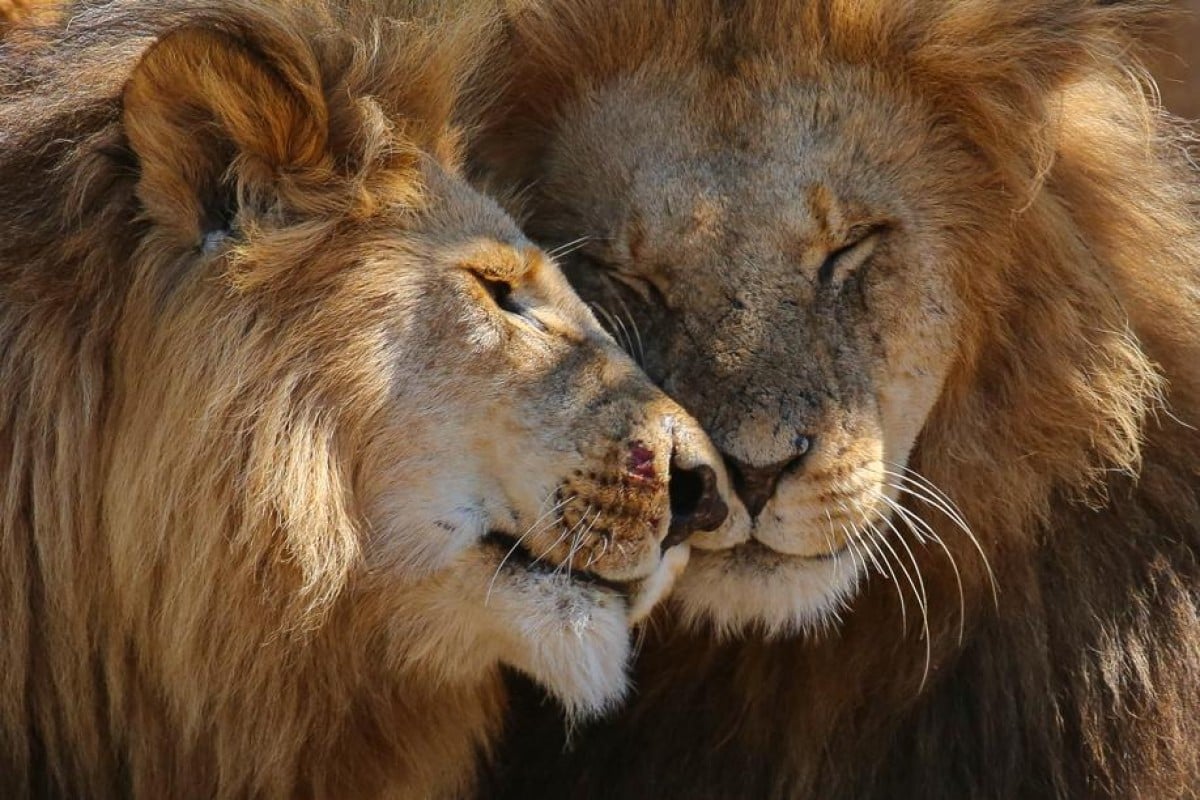
How British wildlife photographer Graeme Green went from interviewing big stars like Angelina Jolie to taking pictures of surfing penguins
The photojournalist talks about the locations and equipment he loves, and the story behind his favourite photo
 Lion brothers in Masai Mara, Kenya.
Lion brothers in Masai Mara, Kenya.After sailing through the dangerous Drake Passage – the water between South America and Antarctica – British wildlife photographer Graeme Green spent an hour testing out different camera angles before snapping the “perfect shot” of a penguin standing on a chunk of ice shaped like a surfboard.
Green is constantly jetting off on photography assignments. Before he headed to Malaysia for a job, he spoke with Young Post over Skype about his career, the stories behind his favourite photos, and the basic tools every wildlife photographer needs.
In pictures: Some of British wildlife photographer Graeme Green’s best shots ever
Before he became a photographer, Green was a journalist who interviewed big names like Angelina Jolie and David Attenborough. “I was working as a journalist, and because I loved photography I always took a camera with me,” he says. “Fifty per cent of the story is the pictures – they combine with words to make something very powerful.
“Photos without words lack context; likewise, a story without photos lacks power and [excitement],” he explains.
Green spent the next 12 or 15 years – he isn’t quite sure himself – travelling to some of the most lonely locations in the world, taking photos for newspapers and magazines such as National Geographic, BBC Travel, and South China Morning Post.
“With wildlife photography, you never know what you’re going to get,” he says. “You can find yourself in the most beautiful locations, from winter landscape in Japan to the Ethiopian Highlands. Wildlife is a constant reminder of what an incredible world we live in.”
Thanks to his job, Green has had the opportunity to see wildlife in action. “While I was on an assignment in Ruaha National Park in Tanzania, a leopard jumped out of a tree onto an impala [a type of antelope],” he says. “While I don’t usually seek out kills, this was something even locals might not see in their lifetime.”
His favourite photo is one he took during a 10-day expedition to Antarctica. “Four or five days into my trip, I noticed the penguins were using the same chunk of ice as they came out of the water. So I positioned myself on a beach and spent 30 to 60 minutes photographing the occasional penguin as they leapt out of the water onto ice that looked like a surfboard,” he says.
However, with every “perfect shot”, there’s also a “missed shot”. “I saw this beautiful baby hippo nestled against the side of its mother, which would’ve been a lovely shot, but I was in no way ready for it,” he says, shaking his head.
“I had less than half a second to take the picture and ended up with a slightly shaky and blurry one. That stayed with me and I was unhappy for days.” To avoid disappointment, Green believes it’s essential to know which equipment to take on a trip.
“The last thing you want to do is spend a lot of money and time travelling somewhere, and suddenly realise there’s a problem with the camera and you don’t have anything to shoot with,” he says.
“You have to have a variety of lenses, with both telephoto [close-up] and wide angle lenses – it’s important to set animals in their environment with wide landscape shots,” he says. “On the other hand, you won’t be able to get any close-ups with [lenses] less than 300-400mm, as in most wild places, animals are quite shy.”
For this reason, his go-to lens is a Canon EF 600mm f/4L that weighs 3.92 kilograms and costs a whopping HK$112,000. “My 600mm lens looks like a rocket launcher,” Green jokes. “Whenever I go through customs, they always check to see if it’s a missile or weapon.”
Patience and some background knowledge of animal behaviour will also increase your chances of being in the right place at the right time.
“I always work with local guides and experts. They know when it’s a good time of the day to be out, when animals sleep, when they hunt,” says Green. “With my penguin photo, instead of rushing around trying to photograph everything, I think it paid off to look around closely, think about what was happening, and then take up a position to shoot.”
Graeme Green's website: www.graeme-green.com
Instagram @graeme.green
Graeme Green’s top 5 wildlife hotspots
Simien National Park in Ethiopia
Any place in Antarctica
Ruaha National Park in Tanzania
Bwindi Impenetrable National Park, Buhoma, Uganda
Bako National Park in Malaysia
Camera bodies for wildlife expeditions
Canon 5D MKIII
Sony A7III
Lenses
Canon EF24-105mm f/4L IS II USM
Canon EF 100-400mm f/4.5-5.6L IS II USM
Canon EF 600mm f/4L IS II USM Lens
Zeiss fixed 55mm F1.8 (for the Sony)
Canon EF-E mount converter MC-11
Other gear
Manfrotto tripod
Set of LEE Filters, including Super Stopper and a 1x 0.6 ND Grad Medium
5 camera batteries
6 high speed 65GB memory cards
Chargers
MacBook Pro laptop
Edited by Charlotte Ames-Ettridge
You might also like:
The 4 best free online programs for audio, video, and photo creation and editing
